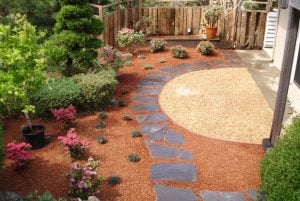 The most common problem with a dry well is that over time lint, solids, soap, and scum in waste water can clog the openings of the well’s walls and the pores of the surrounding soil. As this build up continues, water does not filter out of the well at an adequate rate. Eventually, these clogs prevent water from draining and filtering into the groundwater altogether. And when this happens, it can become a huge problem: Water can back up and begin to pool on your lawn, causing mold, fungus, and lawn disease. In many places, standing water is also a breeding ground for disease-carrying mosquitoes. And if waste water or sewage is responsible for your well’s failure, intensely foul odors and serious biohazards could result.
The most common problem with a dry well is that over time lint, solids, soap, and scum in waste water can clog the openings of the well’s walls and the pores of the surrounding soil. As this build up continues, water does not filter out of the well at an adequate rate. Eventually, these clogs prevent water from draining and filtering into the groundwater altogether. And when this happens, it can become a huge problem: Water can back up and begin to pool on your lawn, causing mold, fungus, and lawn disease. In many places, standing water is also a breeding ground for disease-carrying mosquitoes. And if waste water or sewage is responsible for your well’s failure, intensely foul odors and serious biohazards could result.
How to Avoid Dry Well Clogs
If your well is already clogged, you may need to scrape the walls till you cawaten get enough outflow to drain the basin dry, allowing for further cleaning. Alternately, you may need to pump the water out to get at the source of the clog. Your local box store should have a suitable well pump that you can rent, but you’ll also need to figure where you’re going to pump this debris-filled water. The cost to replace water pump is around $2500.
Usually, rigorous cleaning of the interior walls will be enough to resume adequate draining. In some cases, soil compaction may have dramatically reduced the rate of drainage. When this happens, you’ll probably need to call in the pros. The easiest answer may very well be to dig an entirely new well, but you’ll still need to safely close your well and dispose of any dangerous waste.
Ready to start your Dry Well Problem?
Find ProsWell Stones and Wall Collapse
Most dry wells are at least partially filled with drainage stones. If you don’t know anything about these wells, you may think these stones are there simply to aid the drainage process. In fact, most wells need some stones inside the well to ensure the walls don’t collapse. On the other hand, for every stone you put into your well, you decrease its water-holding capacity. If you have a heavy rainstorm and slow draining well, you may need a contingency plan for overflow. Only the local knowledge of soil and weather patterns can determine if your well has too few or too many drainage stones. In some cases, you may need a bigger well altogether. According to data collected by HomeAdvisor, the average cost of dry well installation is about $3,000, but we’ve also seen some projects that cost less than $1,000.
Dry Well Installation
Basic installation would appear easy enough for the DIYer. Dig a ditch 12 inches deep and run it from your gutter downspout to a suitable place in your yard. Lay PVC piping from your downspout to the end of the ditch with a slope of approximately a 1/4 inch per foot. (It’s a good idea to use perforated pipe covered with landscape fabric near the well.) Cover the ditch with dirt and then dig your well. Line your well with more fabric and pour in about 3 to 6 inches of drainage stone. Then, place a concrete shell in the hole that will comprise your basin, attach the piping, and add more stones as needed to fill in the space around the shell. Install the shell covering, overflow valve, and additional landscape fabric, before covering with dirt.
Okay, maybe it doesn’t sound that easy, and in truth, this doesn’t even cover everything. You may need a professional to choose the right place in your yard for the well. And even a small imperfection in the installation of pipes, fittings, or valves can divert water in an unintended direction. For any number of home improvements, DIYers can end up calling in the pros when things don’t work out, but with lawn drainage you can risk more than just your own property. If your dry well ends up diverting water into your neighbor’s property, you can be held responsible.
 How to Hire a Gardener for Your Lawn and Garden
How to Hire a Gardener for Your Lawn and Garden  The Basics of Landscaping
The Basics of Landscaping  Ornamental Trees and Plants
Ornamental Trees and Plants  What Should I Do With My Shade Trees After a Storm?
What Should I Do With My Shade Trees After a Storm?  Improve Your Short Game at Home: The Complete Guide to a Backyard Putting Green
Improve Your Short Game at Home: The Complete Guide to a Backyard Putting Green 

Are You Familiar With This Topic? Share Your Experience.